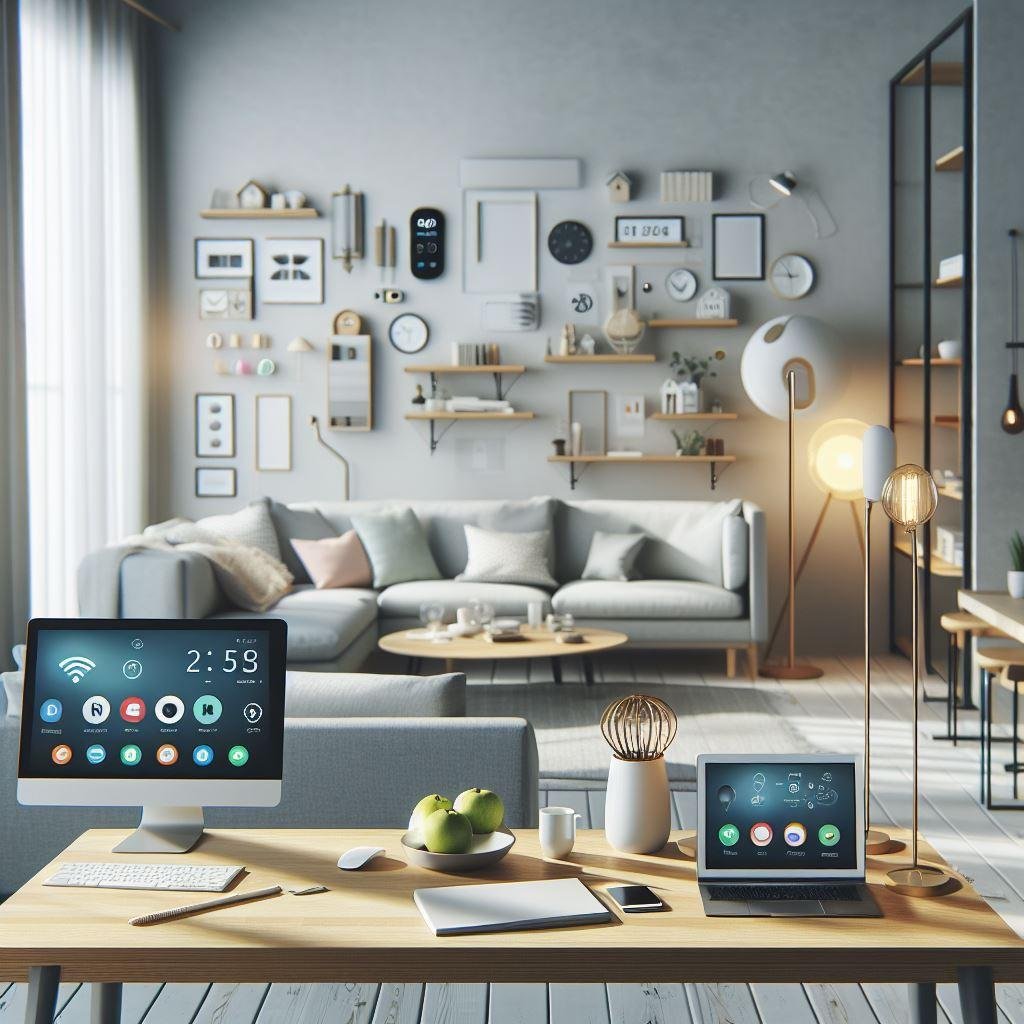Dreams of a smart home – lights turning on with a voice command, the thermostat adjusting itself, your coffee maker brewing before you wake – don’t have to break the bank. Creating a comfortable, convenient, and even energy-saving smart home is achievable, even if you’re starting on a shoestring budget. The Beginner’s Guide to Setting Up a Smart Home on a Budget. Let’s dive in and discover how to transform your regular home into a smart home without sacrificing your savings.
Choose Your Smart Assistant
Think of your smart assistant as the ‘brain’ of your smart home. It’s the device you’ll talk to and what will control most of your other smart tech. Popular options in the US are:
- Amazon Alexa: Works with a huge range of devices, easy to use, affordable Echo speakers.
- Google Assistant: Integrates seamlessly with Google products and services (Gmail, Calendar, etc.). Great if you’re already a Google user.
- Apple HomeKit/Siri: Best if you are deeply invested in the Apple ecosystem (iPhone, iPad, etc.). Focuses on security and privacy.
Budget Tip: Start with a basic smart speaker, like an Echo Dot or Google Nest Mini. These are often on sale and provide a great foundation to build upon.
Start With Smart Essentials
Begin your smart home journey with core items for maximum impact:
- Smart Lights: Control with your voice or phone, set schedules to save energy, create moods with color-changing bulbs. Affordable brands include Wyze, Sengled, and Kasa Smart.
- Smart Plugs: Turn ordinary devices (lamps, fans, coffee makers) “smart.” Control remotely or set schedules. Look for budget options from Wyze, Gosund, or Amazon Basics.
- Smart Thermostat: Can save on heating/cooling costs by learning your habits and adjusting automatically. Nest is popular, but ecobee also offers great features.
Enhance Comfort and Convenience
Once you have the basics, add more functionality:
- Smart Doorbell: See who’s at the door, even when you’re away. Affordable options include Ring, Wyze Video Doorbell, and Blink.
- Smart Lock: Unlock/lock your door from anywhere, grant temporary access to guests. Consider August Wi-Fi Smart Lock or Schlage Encode.
- Smart TV or Streaming Stick: Voice control, access to Netflix, Hulu, and more. Roku and Amazon Fire TV Stick are budget-friendly.
Security Without the Price Tag
Upgrade your home security without monthly fees:
- Smart Indoor Cameras: Keep an eye on your home while away. Wyze Cam and Blink Mini are great low-cost options.
- Motion Sensors: Trigger lights to turn on, get alerts if unexpected movement occurs. Samsung SmartThings and Wyze offer affordable sensors.
Automating Your Routines
Make your smart home work for YOU:
- “Good Morning” Routine: Wake up with the lights gradually turning on, your coffee brewing, and your favorite news briefing.
- “Leaving Home” Routine: Ensure lights are off, doors locked, thermostat adjusted for savings.
- “Goodnight” Routine: Dim the lights, play soothing music, and ensure the house is secure for the night.
Smart Hubs: Necessity or Nice-to-Have?
A smart hub can connect devices that use different communication (like Zigbee or Z-Wave). They often expand your automation possibilities. Consider a hub IF:
- You plan on having lots of smart devices from different brands.
- You want advanced automation features not available through your voice assistant.
Tips for a Budget-Friendly Smart Home
- Sales are your friend: Black Friday, Cyber Monday, and Prime Day are great for scoring deals.
- Used/refurbished: Consider sites like eBay for like-new smart devices.
- Start small, scale up: Don’t try to buy everything at once. Build your system over time.
- Compatibility check: Ensure devices work with your chosen smart assistant BEFORE buying.
- DIY when possible: Simple installation of lights or plugs can save on professional costs.
FAQ: Your Smart Home Questions, Answered
-
Q: Do I need super-fast internet for a smart home?
- A: No, basic internet is sufficient for most devices. However, streaming from cameras or a smart TV benefits from faster speeds.
-
Q: Can I install smart devices myself?
- A: Absolutely! Most lights and plugs are simple. More complex setups (thermostats, some locks) might benefit from a professional.
-
Q: Are smart home devices secure?
*A: Choose reputable brands, set strong passwords, and enable security features. It’s like online safety – vigilance is key. -
Q: Can I still use light switches with smart bulbs?
- A: Yes, but if switched off, the smart functionality won’t work. Consider smart switches instead for a seamless experience.
-
Q: Will my smart home work if the internet goes out?
- A: Basic functions (like turning on lights with the app) will still work. Voice commands and automations requiring internet won’t.
Conclusion
Setting up a smart home doesn’t have to be complicated or ruin your wallet. With planning and savvy choices, even a modest budget can bring intelligence, convenience, and a touch of magic to your living space. Start small, embrace deals, and most importantly, have fun customizing your home to work for you!

